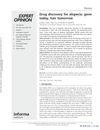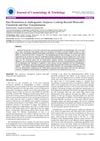Losing gains from 7 months of oral min, fin, dut. Update 11/28/2023
A user reported losing hair after 7 months of using oral minoxidil, finasteride, and dutasteride, but others reassured that this is likely just a shedding phase where old hairs fall out to make way for new growth. Some users experience sheds every 7-8 months and suggest staying consistent with treatment.
View this post in the Community →
Similar Community Posts Join
6 / 1000+ resultscommunity 1 month and 1 week update, Topical Min and Fin, Nizoral and Microneedling
A user who started using minoxidil and finasteride topically, micro needling weekly, Nizoral twice per week, and switched to sulfate free shampoo and conditioner. The user reported that after 1 month and 1 week of this routine they noticed their hair was thicker and healthier, with less shedding and no more dandruff or itching during workouts.
community New baby hairs are popping out. Question though: what are these black dots on hairline? Clogged pores?
The user is experiencing new hair growth after using oral dutasteride, topical minoxidil, and microneedling, but is concerned about black dots on the hairline, which might be clogged pores or dormant follicles. The user previously used a topical minoxidil/finasteride spray and had good results, despite a shedding phase after switching treatments.
community Questions on Minoxidil and Finasteride Efficacy After 10 Years of Hair Loss
Topical minoxidil with finasteride can help focus treatment on the scalp, with shedding being normal initially. Foam minoxidil is easier to apply, PRP's effectiveness varies, and anti-dandruff shampoos like ketoconazole are beneficial for scalp health.
community 20M Losing/lost hope, have tried everything
A 20-year-old is experiencing hair loss and has tried oral and topical minoxidil, finasteride, and is considering dutasteride and a hair transplant. They feel frustrated and hopeless due to the lack of results and its effect on their mental health.
community Microneedling-induced shedding after 5 months?
A user experienced significant hair loss after starting microneedling, despite using dutasteride and topical minoxidil. They are advised to consult a doctor as the shedding pattern is unusual and may indicate alopecia areata or other scalp conditions.
community So what’s really the deal with dutasteride hairline ruining claims?
The potential effects of dutasteride on hair loss, with some users reporting it improved their hairline while others experienced worsened hair loss or shedding. Other treatments discussed include minoxidil and finasteride, as well as RU58841.
Related Research
6 / 1000+ results
research Drug Discovery for Alopecia: Gone Today, Hair Tomorrow
Topical drugs and near-infrared light therapy show potential for treating alopecia.

research Treatment-Induced Hair Shedding (Dread Shed) Associated With Androgenetic Alopecia Therapies
"Dread shed" is common with minoxidil but less so with other hair loss treatments.

research Androgenetic Alopecia: Therapy Update
There are many treatments for common hair loss, but more trials are needed to decide which are best.

research A Review of the Treatment of Male Pattern Hair Loss
Finasteride and minoxidil work best together for hair loss.

research Phytochemicals as Emerging Therapeutic Agents for Alopecia Treatment
Plant-based chemicals may help hair growth and prevent hair loss but need more research to compete with current treatments.

research Hair Restoration in Androgenetic Alopecia: Looking Beyond Minoxidil, Finasteride, and Hair Transplantation
Alternative treatments show promise for hair growth beyond traditional methods.